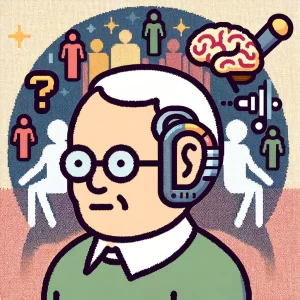
A Rising Urgency for Dementia Prevention
Last summer, nearly one in three counties across the U.S. reported heat emergencies that disproportionately impacted older adults. At the same time, local clinics struggled with rising cases of diabetes and hypertension—two well-known risk factors for dementia. With an aging population and constrained health budgets, primary care providers face a pressing question: how can we identify patients most at risk for dementia early enough to intervene?
A new systematic review published in the American Journal of Preventive Medicine offers timely insights. Researchers evaluated the reliability, validity, and feasibility of dementia risk screening tools specifically designed for use in primary care. Their findings spotlight which tools are ready for use today, where the gaps remain, and what public health systems should do next.
Why Dementia Risk Screening Matters Now
Globally, more than 55 million people live with dementia, with 10 million new cases each year. The economic toll exceeded $1.3 trillion in 2019, excluding the unpaid hours that family members dedicate to caregiving. Yet studies suggest that addressing modifiable risks—like obesity, diabetes, hearing loss, smoking, and social isolation—could prevent nearly half of dementia cases worldwide.
The promise is clear: if primary care teams can identify at-risk patients, they can deliver lifestyle interventions that reduce both cognitive decline and the burden of chronic diseases. But the challenge lies in choosing the right screening tool.
What the Study Found
The review examined 34 studies covering 11 screening tools. Some used routine clinical data, while others required extra questionnaires or lab measures. Accuracy varied widely, with predictive power ranging from chance (0.52) to excellent (0.86).
Two tools stood out:
- CAIDE (Cardiovascular Risk Factors, Aging, and Dementia): Best suited for midlife adults. It uses factors like blood pressure, BMI, and cholesterol to estimate risk years before symptoms appear. In the FINGER trial, using CAIDE to identify at-risk patients followed by a lifestyle intervention improved cognition and cardiovascular health.
- LIBRA (Lifestyle for Brain Health Index): Focused only on modifiable lifestyle factors such as diet, exercise, depression, and social activity. Validated for adults under 80, LIBRA helps link risk assessment directly to prevention strategies.
By contrast, most other tools showed inconsistent results, especially when tested in adults over 80 or in low- and middle-income countries.
From Evidence to Practice: What This Means for Public Health
For Health Departments
- Program Planning: Tools like LIBRA and CAIDE can help identify high-risk groups in midlife, guiding targeted prevention programs.
- Equity Lens: Because many tools were validated in high-income countries, adaptation is needed before deploying in under-resourced communities.
For Primary Care Clinics
- Feasibility Counts: The best tools are quick, use existing data, and don’t burden busy clinicians. RADaR, for example, takes less than 5 minutes to administer.
- Tailored Interventions: Screening should always link to action—whether that means referrals to exercise programs, nutrition counseling, or social connection initiatives.
For Policymakers
- Scaling Up Prevention: Integrating dementia risk screening into routine primary care could reduce future healthcare costs.
- Workforce Training: Providers will require support to effectively integrate risk tools into electronic health records and counsel patients.
A Contrast Worth Noting
Traditionally, dementia screening focused on detecting current cognitive impairment—essentially catching the disease late. This review highlights an alternative approach: predicting risk early and connecting patients to preventive care.
We once assumed dementia was inevitable with age. But evidence shows otherwise: prevention is possible if we act early, systematically, and equitably.
Barriers and Challenges
The review also underscores real-world hurdles:
- Oldest-Old Gap: No tool reliably predicts dementia risk in adults 80+. For this group, normal age-related changes blur risk signals.
- Generalizability: Tools validated in Finland or Australia may not transfer neatly to diverse, lower-income populations.
- Acceptability: Few studies asked patients or providers how they felt about using these tools—a key step for adoption.
What’s Next
To build on this evidence, future work should:
- Test in underserved settings where dementia burdens are rising but resources are scarce.
- Standardize validation protocols so tools can be compared fairly across studies.
- Explore patient perspectives on whether screening feels empowering or stigmatizing.
Ultimately, embedding dementia risk screening into primary care could reshape prevention—if systems commit the time, funding, and workforce support to make it work.
Join the Conversation
The review closes with cautious optimism: tools exist, but we need smarter implementation. For public health leaders, the questions now are:
- How could your agency apply dementia risk screening in programs today?
- What barriers—technical, financial, cultural—might limit its adoption in your community?
- Does this research challenge the way you think about prevention and aging?
As the dementia crisis grows, the opportunity for prevention is here. The question is whether we will seize it.



